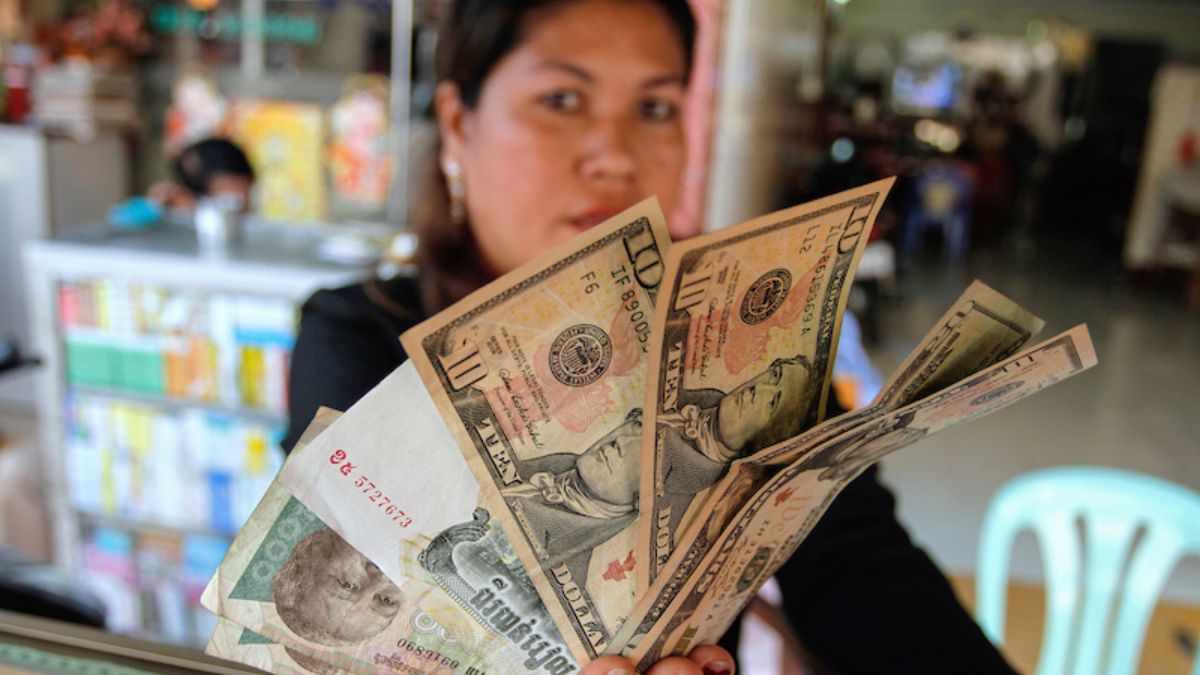Cambodia’s Prime Minister, Hun Manet, recently suggested that the country might soon start accepting old, dirty, or slightly torn US dollar bills more widely, after running a successful pilot project in one of the provinces.
Earlier this month, Siem Reap province began accepting worn-out US dollar banknotes after the National Bank of Cambodia (NBC) mandated that all commercial banks accept them without charging any fees.
Hinting at a green light for broader adoption, Manet was quoted as saying by local media, “The implementation in Siem Reap is a pilot step for the NBC to evaluate and develop a specific plan before announcing this new policy across the country in the near future.”
According to “This issue looks small, but it can affect tourism as a whole,” Manet was quoted as saying by Cambodian news outlet Khmer Times. “At the same time, we need to be careful so that Cambodia will not become a place just for exchanging dirty, torn and old US dollar banknotes,” he added.
So, why is Cambodia considering the use of worn-out US dollars? And what could this mean for the Cambodian currency, the Riel? Let’s explore these questions to understand the broader implications.
Why does Cambodia use dollars?
Cambodia’s use of the US dollar can be traced back to the aftermath of the Khmer Rouge regime (1975-1979), which left the country’s economy in ruins.
The regime’s policies and the ensuing civil conflict also severely damaged Cambodia’s financial infrastructure and eroded trust in the Cambodian Riel, which faced high inflation and devaluation. A paper titled Dollarisation of Cambodia said that immediately after the regime conquered the capital city, the National Bank of Cambodia’s headquarters was bombed to the ground.
A pivotal moment in Cambodia’s financial history occurred in 1993 when US peacekeeping forces arrived to oversee the transition to democracy. The United Nations Transitional Authority in Cambodia (UNTAC) was established to help guide the country through its first democratic elections. As part of their mission, the peacekeeping forces also brought substantial amounts of US dollars with them.
The introduction of US dollars marked a significant shift. The dollars began circulating alongside the Riel, providing much-needed currency stability amid postwar reconstruction.
According to an estimate by the National Bank of Cambodia in 2017, roughly 84 per cent of economic transactions in the country were conducted in dollars.
Impact Shorts
More ShortsWhile the American currency remains important for international trade, over the years calls for Cambodia to move towards using its currency have been increasing, while reducing dependence on dollars.
“If we don’t have our own currency, can we call it our own country?” Yim Sovann, a spokesman for the Cambodia National Rescue Party had told local media. “To use Khmer riel in our own economy is a must.”
Keeping it riel
Cambodia is actively promoting the use of the riel, with Prime Minister Hun Manet encouraging citizens and businesses to embrace the national currency. The government’s efforts are particularly focused on phasing out small US dollar denominations such as $1 and $5 bills, which are being collected and sent abroad by NBC.
In the first six months of 2024, the export of US dollars surged by 66 per cent compared to the same period last year, while imports of US dollars decreased by 100 per cent, according to a report by the central bank. Additionally, the collection of small US bills at NBC headquarters and its branches nationwide increased by 37.4 per cent, and the export of these notes abroad rose to 55.2 per cent.
By the end of December 2023, over 17.3 trillion Riel were circulating in Cambodia. Despite the dominance of US dollars in urban areas, where private companies often prefer dollars for transactions and salaries, the Riel has a strong foothold in rural provinces, particularly within agricultural communities.
Also by accepting the worn-out dollar notes, the government can facilitate the withdrawal of US dollars from everyday use and promote the riel.
The South Asian country also introduced the digital currency Bakong in 2020. Designed to facilitate payments between traditional banks and other financial institutions via smartphones and computers, Bakong aimed to reduce dependence on the US dollar.
Central bank governor Chea Serey told Nikkei Asia that as of 2023, Bakong had approximately 10 million accounts, suggesting that about 60 per cent of the population is now likely able to use it for payments or money transfers.
With input from agencies
Sayli Dhodapkar is currently working as a Sub-Editor at Firstpost Editorial team.
)